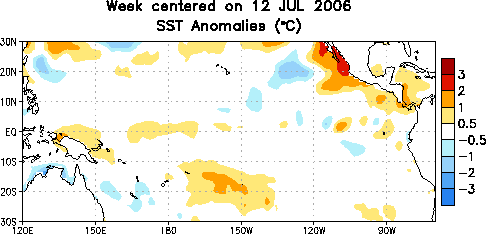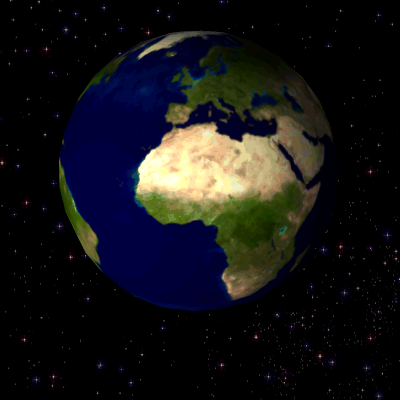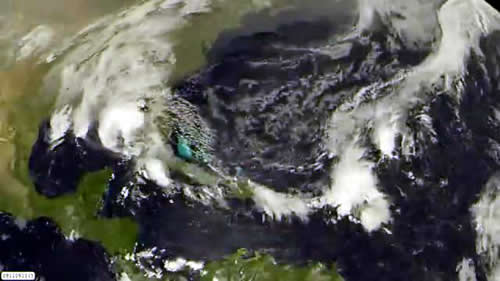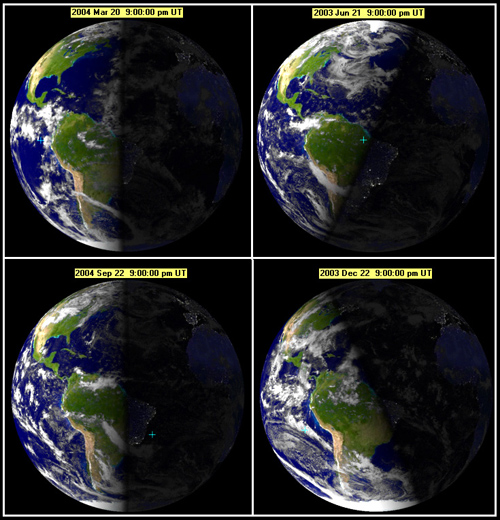Climate vs. Weather
 Climate is what we expect. Weather is what we get.
Climate is what we expect. Weather is what we get.
– Mark Twain
Look out your window right now. Is it raining or sunny, snowing or windy? These types of daily events are weather events -- temperature and precipitation changes that last from a few hours to a few days. Climate, on the other hand, is the general pattern of weather in a given area measured over long time scales. Climate varies in different parts of the planet due to differences in atmospheric and ocean circulation patterns. What factors do you think control climate? Click on the images below to find out.
Heat in Motion
The earth’s climate is controlled by patterns of ocean and air circulation that move heat and moisture around the planet. Take a look at the image below that shows major ocean circulation patterns on earth.
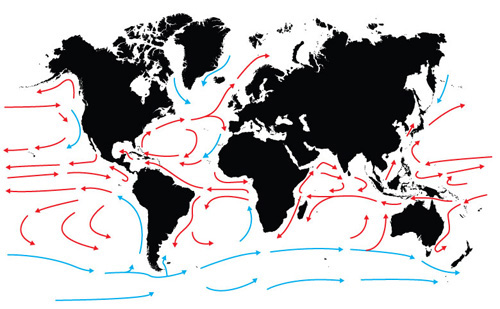
Warm currents flow away from the equator and colder water flows towards the equator.
Temperature at the Equator
Why do warm currents always flow away from the equator and cold currents towards the equator? Does the image below give you any hints? It shows the earth’s annual mean temperatures.
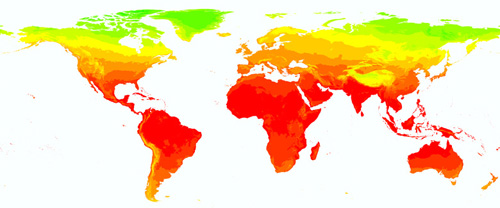
This image shows that the planet is much warmer at the equator and cooler towards the poles. Anyone who’s compared a trip to Alaska to a trip to Florida knows that, but what causes this difference in temperatures?

When sunlight strikes the earth, it hits the equatorial regions head-on (higher solar input), but the northern and southern latitudes at an angle (lower solar input), spreading out the same amount of light over a larger area. This causes the equatorial regions to be heated more than the polar regions. Uneven heating like this drives winds and currents.
http://commons.wikimedia.org/wiki/File:Oblique_rays_02_Pengo.svg
Atmospheric Circulation Patterns
Sunlight striking the earth at different angles causes uneven heating of the surface, as you saw in the images on the previous page, but what causes the particular patterns of ocean and air currents? Does the animation to the right give you any hints?
A difference in the temperature between the equator and the poles drives wind to flow towards the poles. Since the equator spins faster than the poles (called the Coriolis Effect), when the warm air and water are driven north in the Northern Hemisphere it is deflected to the right. In the Southern Hemisphere, the air is deflected to the left or always deflected east, because the earth is rotating east to west, forming a pattern of atmospheric circulation cells.
Text Version
Earth’s Ocean & Air Currents
Take a look at the animated image below to see the pattern of the earth’s ocean currents. Click on it to add the air currents..

KC Distance
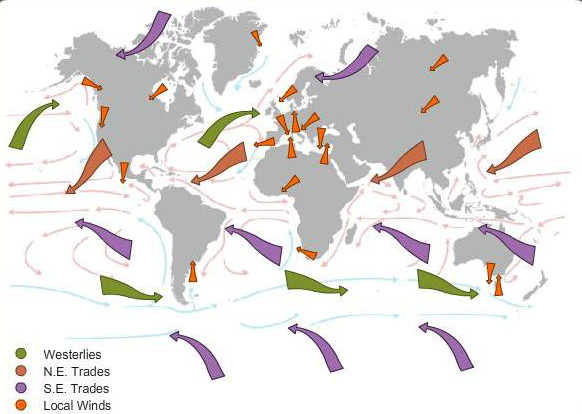
KC Distance
Text Version
ENSO Cycles
Winds and current interact in many ways, one of which is the infamous El Niño Southern Oscillation (ENSO) cycle. Take a look at the video below to learn what causes the ENSO cycle.
Click National Geographic: El Niño to watch the movie.
Here is a nice explantion comparing the differences between El Nino and La Nina:
Direct link: https://youtu.be/tyPq86yM_Ic
During an ENSO cycle, prevailing winds in the tropics change directions and begin to blow in the opposite direction. This causes warmer waters offshore of South America to move towards the coast. Normally there are nutrient-rich upwellings of cold water near the shore that support a rich marine food web. However, with the arrival of the warmer waters, these cold upwellings are shut down. This change in ocean temperatures causes changes in the global weather and climate patterns.
Consequences of the ENSO cycle include warming of water, movement of warm ocean waters, increased and decreased rainfall, increased land temperatures, changing ocean currents, flooding, drought, and heavier and more frequent storms. All of these affect human activities, but differently depending on what part of the world we are focusing on. The marine ecosystem is dramatically affected. During an El Niño year, many marine animals starve due to a lack of their normal food resources. Coral may become bleached and even die as a result of warmer waters, and migration patterns for many marine species are disrupted.
Eastern and central tropical Pacific, eastern and central equatorial Pacific, and the coast of South America.
